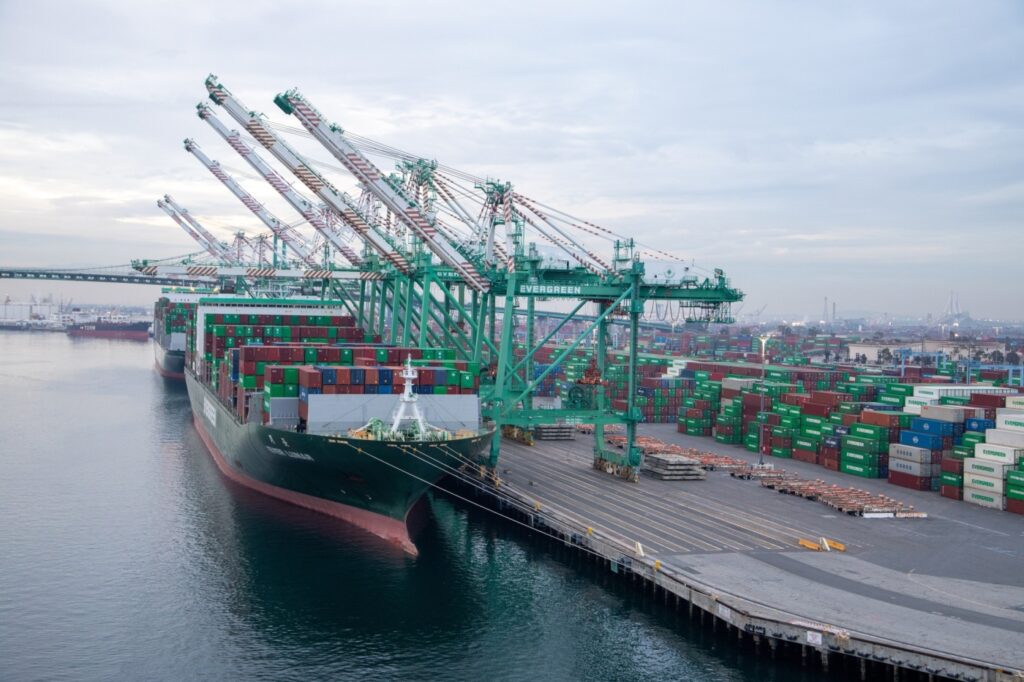
Back in January, 109 container ships waited off the California coast to unload cargo in Los Angeles and Long Beach, the nation’s two largest ports. Consumers, stuck at home amid the pandemic, had unleashed an avalanche of orders for goods that overwhelmed factories and ports.
Importers were paying $20,000 to send a single container from China to the United States — sometimes more than the goods inside were worth. Businesses had to backorder everything from bedroom furniture to kitchen fryers, if they could get them at all.
These days? No freighters are lingering off the Southern California coast. Containers from China go for just $2,000. Restaurants can order fryers and have them delivered in a couple of weeks.
The supply backlogs of the past two years — and the delays, shortages and outrageous prices that came with them — have improved dramatically since summer. The web of factories, railroads, ports, warehouses and freight yards that link goods to customers have nearly regained their pre-pandemic levels.
“We are in a very different place than we were,” said Phil Levy, chief economist at the supply chain consultancy Flexport. “If you ask, how long does it take to move stuff, there has been notable improvement. If you measure it by how long would it take to get a cargo from Asia to a destination port, dramatically better.”
The easing of supply bottlenecks has begun to provide some relief from the inflation that this year reached a four-decade peak, pummeling consumers and businesses. The progress has been modest and so far short-lived. Yet it’s still provided a glimmer of good news in the holiday shopping season: Gift items are much likelier to be in stock, perhaps at lower prices. The government’s latest inflation report showed that prices of toys, jewelry and girls’ apparel all fell in October.
“Overall, the shelves are full,” said Zvi Schreiber, CEO of Freightos Group, a digital platform that books international shipping. “We’re not seeing significant shortages of items.”
“Supply chains are really not the problem anymore,” agreed Timothy Fiore, who leads the Institute for Supply Management’s manufacturing survey and is chief procurement officer at the transportation firm Ryder System. “We’ve had four or five months of supplies looking better. Prices have dropped, too.’’
The main factor behind the improvement has been diminished demand for manufactured goods. Spending on goods has fallen for three straight quarters, according to the Commerce Department. Higher borrowing rates, engineered by the Federal Reserve to try to tame inflation, have reduced Americans’ willingness to buy more physical things. Inflation itself has sapped their spending power.
And having splurged on everything from lawn furniture and sporting goods to appliances and electronic gear during the COVID shutdowns, consumers have increasingly shown a desire to venture out and spend on experiences rather than goods. Demand has shifted toward services — restaurant dinners and plane tickets, hotel rooms and entertainment. As orders for manufactured goods have slowed, so have the price pressures surrounding them.
At the sprawling Southern California ports, the shipping backup has eased, in part because companies have sent cargo to Gulf Coast and Atlantic ports to avoid delays. Port Houston says its cargo volume is up 18% from this time last year.
An index that measures demand for freight shipments had hit a high of 115 earlier this year; now, it’s below the five-year average of 53.
“We’re returning to the mean and the trend lines that existed pre-COVID,” said Chris Adderton, senior vice president for the Council of Supply Chain Management Professionals.
